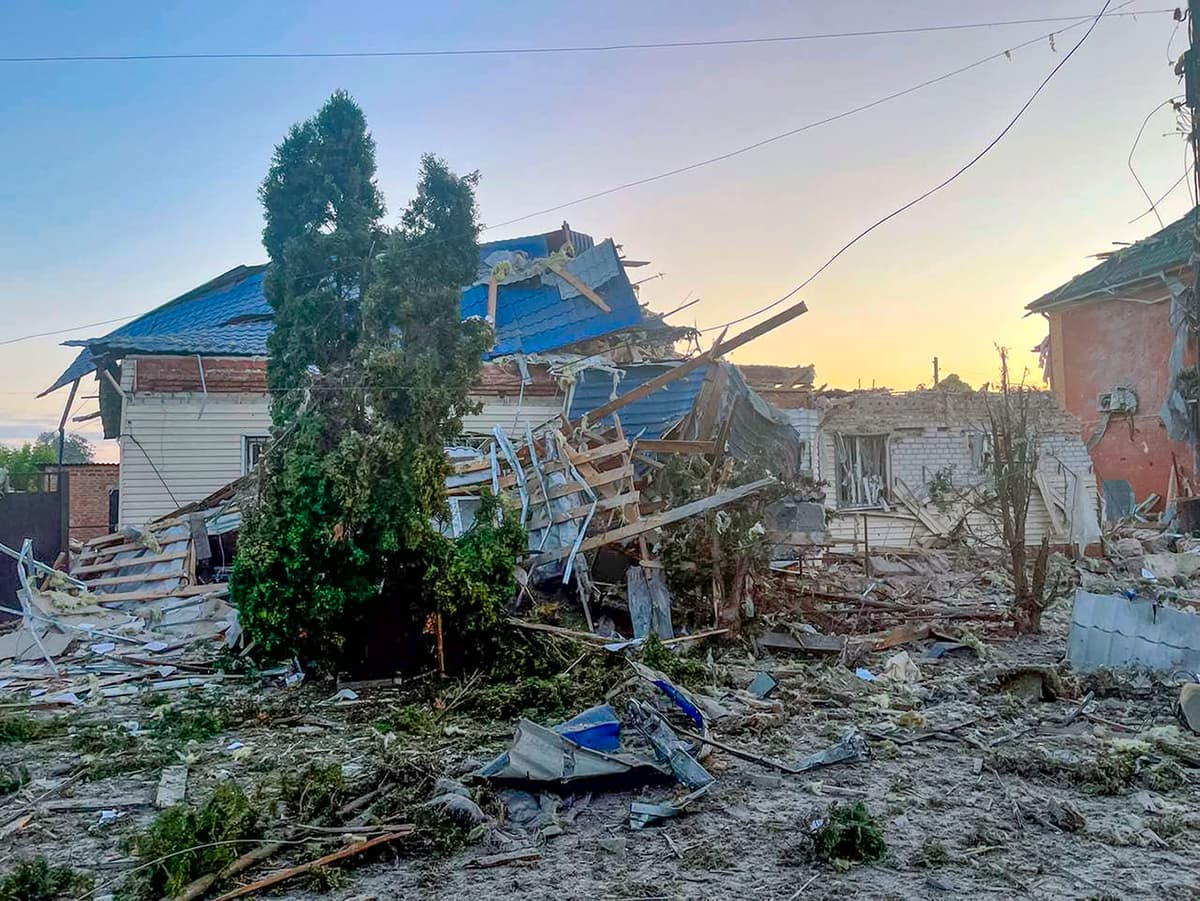Ukraine’s Counter-Invasion of Russia Could Gain Bargaining Chips for Kyiv in the Event of Negotiated Peace With Moscow
‘Everyone can see that the Ukrainian army knows how to surprise,’ Zelensky says, as America and European allies give green light to the cross-border incursion.

As Russia endures its first invasion by another country since World War II, America and Europe watch benignly from the sidelines. In a move that caught Russian soldiers by surprise, Ukrainian troops suddenly rolled across the border Tuesday morning. They rode Western-supplied infantry fighting vehicles — Marders from Germany, and Strykers and Bradleys from America.
In three days of intense fighting, the Ukrainians have taken about 20 villages, more than 100 Russian POWs, and about 200 square miles of Russian land. By contrast, Harvard’s Belfer Center calculates that Russia took 61 square miles of southeast Ukraine during one month of heavy fighting this summer. Russia’s Health Ministry says 66 civilians have been wounded. Dozens of Russian and Ukrainian soldiers have died.
The world community should “strongly condemn the Kyiv regime’s criminal attacks on Russian territory,” a Russian Foreign Ministry Spokesman, Maria Zakharova, demanded.
Brussels and Washington responded with studied yawns.
Ukraine “has a legitimate right to defend itself against aggression, including by striking the aggressor on its territory,” the European commissioner for foreign affairs and security policy, Peter Stano, said about Ukraine’s cross-border incursion into Kursk region. Russia has long used the border region for air and artillery attacks against nearby Ukrainian cities.
In Berlin, Germany’s government sees no problems with Ukraine using Marders or Leopard 2 battle tanks as its generals see fit, the Bundestag’s Defense Committee chairman, Marcus Faber, told the Funke Media Group. He said: “With the handover to Ukraine, they are Ukrainian weapons.”
In Washington, Pentagon spokeswoman Sabrina Singh said Ukraine’s move is consistent with Biden Administration policy. Talking to reporters yesterday, she said: “Ukraine is doing what it needs to do to be successful on the battlefield.”
“They are taking actions to protect themselves from attacks that are coming from a region that are within the U.S. policy of where they can operate, our weapons, our systems, our capabilities,” she said. Ms. Singh referred to an American policy adopted this year to allow Ukraine to use American-supplied weapons to hit Russian units that fire on Ukraine from Russian border areas.
Similarly, State Department spokesman Matthew Miller said Wednesday that the actions of Ukrainian troops in Russia’s border area “are not a violation of our policy.”
As Ukrainian forces consolidated their hold on the Sudzha gas hub and progressed halfway from the border to the Kursk Nuclear Power Plant, it became clear yesterday that Ukraine is collecting bargaining chips for future armistice talks.
A top adviser to President Zelensky, Myhailo Podolyak, said Thursday that border region attacks will cause Russia to “start to realize that the war is slowly creeping inside of Russian territory.” He also suggested such an operation would improve Kyiv’s hand in the event of negotiations with Moscow.
“When will it be possible to conduct a negotiation process in the way that we can push them or get something from them?” Mr. Podolyak asked yesterday on Ukraine’s national TV news. “Only when the war is not going on according to their scenarios.” Without referring specifically to the Kursk operation, he said that attacks inside Russia lead Russians “to realize that the war is slowly creeping inside of Russian territory.”
Later he posted on X: “Russia, by the way, has always believed that it can use its border regions with impunity for massive air and artillery attacks on the sovereign territories of other countries.”
For many Russians, the war came home on Wednesday when a well-known war correspondent, Yevgeny Poddubny, was nearly killed by a Ukrainian drone. The reporter, who had covered Russian operations in Syria, was severely injured in the Ukrainian assault of Suzhda. He was flown in a medical evacuation plane to Moscow.
Ukrainian officials are still not commenting directly on the Kursk offensive. However, Mr. Zelensky came close last night in his daily evening address to the nation. He said: “Russia brought war to our land — and it should feel what it has done.”
Earlier in the day at a military gathering, he praised the nation’s armed forces, saying: “Everyone can see that the Ukrainian army knows how to surprise.” Without citing Kursk, he said he has received reports from Ukraine’s top commander, Colonel General Oleksandr Syrskiy. He called the military action “effective” and “exactly what our country needs now.”
Ukraine’s operation seems quite professional so far. Electronic warfare equipment has disrupted Russian communications. Relief brigades are being rotated in. Low flying helicopters are flying ammunition in, and wounded out. However, the easy phase may end soon.
Russian military bloggers report that Moscow is moving Chechen Akhmat fighters up from the front in Kharkiv and Wagner group mercenary fighters from Belarus. These reinforcements may put the brakes on Ukraine’s fastest moving offensive since it raced to fend off Russia’s invasion in 2022.

